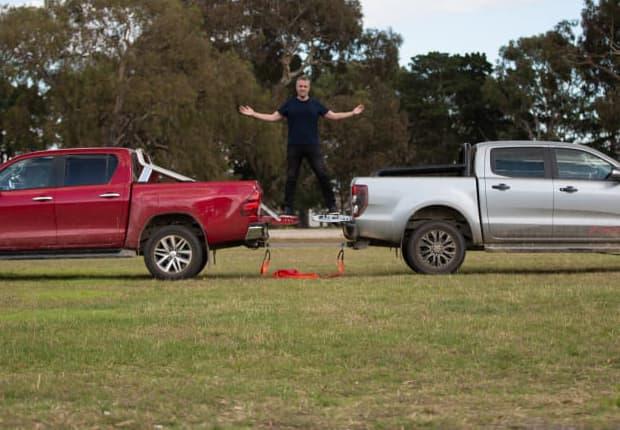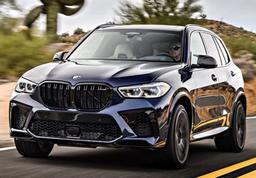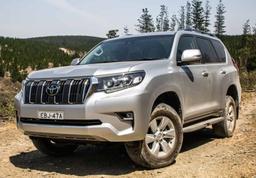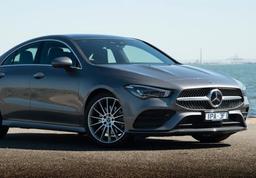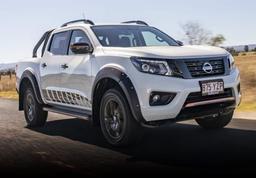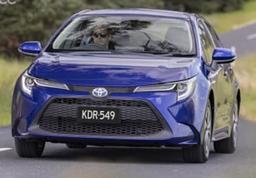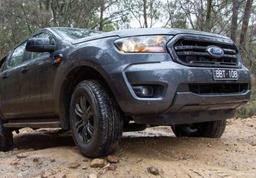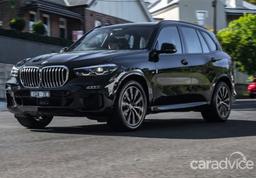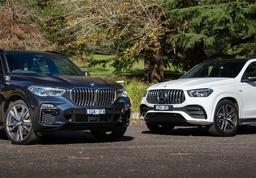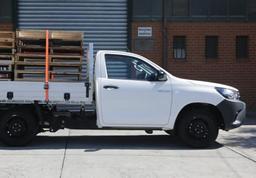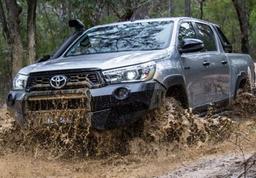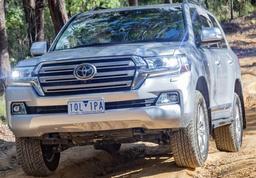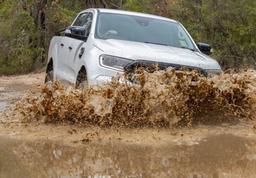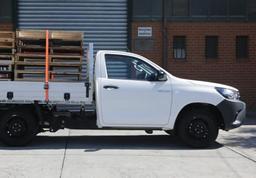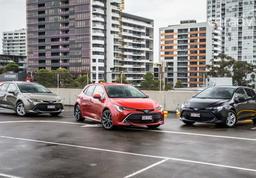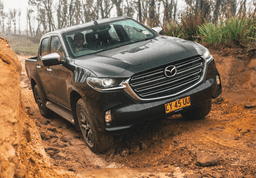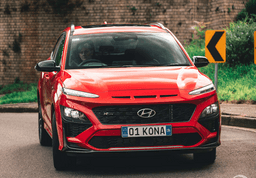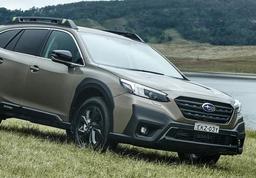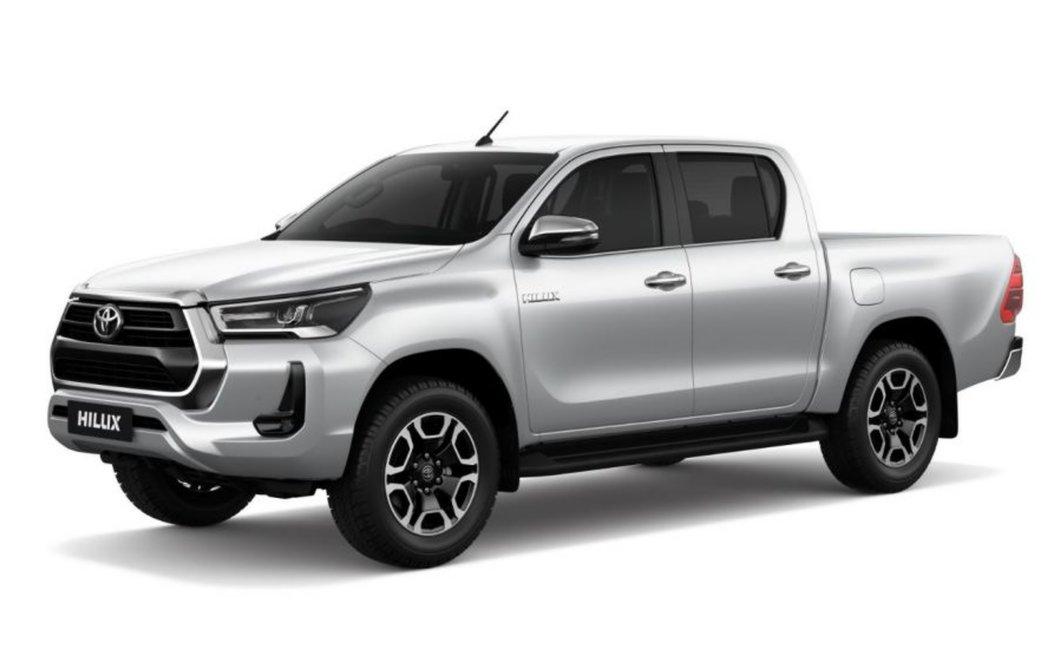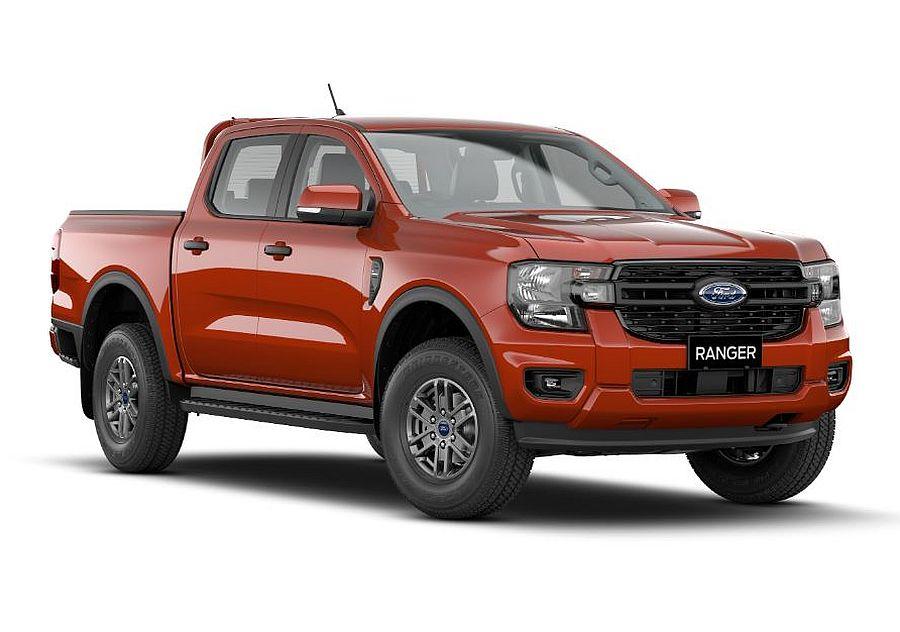Coke v Pepsi. Carlton v Collingwood. Balboa v Drago.
Famous rivalries all, but none of them are a pinch on the fierce battle between Australia’s two favourite utes.
The 4x4 versions of the Toyota HiLux Ford Ranger constantly duke it out for the honours of the top-selling car in the country. So evenly are they matched, that the difference in sales volume over the past 60 months is less than 1000 vehicles, out of almost 340,000 sold.
Even creating the chart to illustrate the cumulative sales growth produces a merged, overlapping line. Neck and neck, every step of the way.

The thing is though, like all great rivalries, buyers tend to fall into one camp or the other. You are either Team Ranger or Team HiLux, never both.
We’re expecting an update to the Toyota later this year, and to the Ranger early next. Will either update shift the dynamic of the most competitive status-quo on Australian roads, we’ll have to wait and see. But for now, let’s dig a little deeper and find out why these two pick-ups tread such a divisive and popular line.
Pricing and specs
We’ve turned our attention to the top-selling variants of both our contenders, the 2020 Toyota HiLux SR5 and 2020 Ford Ranger XLT. Both double-cab, style side, 4x4, automatic utes and both in hot demand. So much so, that ah… our XLT was sold between booking and producing this content, so we substituted in a 2020 Ford Ranger FX4 which is mechanically identical.
The dual-cab 4x4 Ford Ranger range starts at $45,190 (before options and on-roads) for an XL Cab Chassis, or $48,290 if you want the tub. Jump through XL, past XLS and Sport to reach the XLT which can be had for $56,840 with a manual transmission. Choose the five-cylinder engine and throw in the auto and you have our blue-corner contender at $59,040 (before options and on-roads).
The black-pack FX4 with identical hardware carries a $2500 premium.
Our car is finished in Aluminium Metallic ($650) – one of six options – and does have the leather accented interior ($1500) as part of the FX4 grade. It is, however, missing the key option of the Tech Pack ($800) which gives it adaptive cruise control and automatic parking, which is a shame as at just 1.4 per cent of the car’s retail price it really should be standard.
Over in the red-corner, you can jump into a four-door four-by-four HiLux Workmate Cab Chassis for $43,365 (before options and on-roads) or $44,865 with a body. This runs the smaller 2.4-litre turbo-diesel engine though, so we’ll skip past that and the more basic SR to the automatic SR5 double-cab at $57,240, an $1800 saving on the Ford.

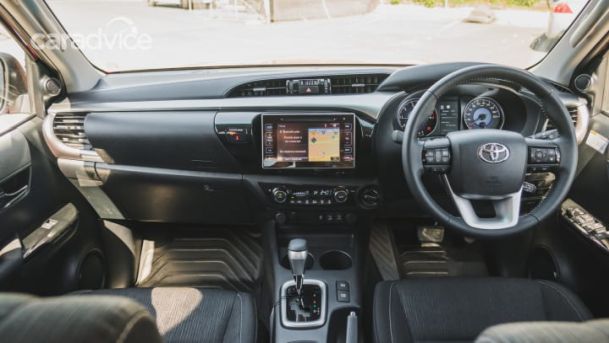
Our Olympia Red Metallic paint (one of seven choices) attracts a $600 premium, and our ute skips on the only other box-tick of the premium interior ($2000) which adds an electric driver’s seat and leather-trimmed upholstery. Here too you can jump to the black-pack HiLux Rogue for an additional $5250.

In terms of equipment, both cars offer satellite navigation, keyless entry, and a standard tow-hitch. There are rear differential lockers all round, alloy wheels, sports bars and side steps to make a statement, as well as a host of driver assistance and safety tech. The Ford throws in dual-zone climate control and support for smartphone mirroring, while the Toyota offers adaptive cruise control, which as noted earlier is still optional on the Ranger.
It’s a close race, but the HiLux takes the value round.
Size and dimensions
In terms of physical footprint, the Ford Ranger is a big unit. At 5446mm long and 1977mm wide, it’s a whole 116mm longer and 92mm wider than the HiLux (5330mm x 1885mm).
Much of this extra size is between the wheels (the Ford has a 135mm longer wheelbase), which affords the Ranger a larger cabin, but more on that shortly.
Now, if you’ve been doing primary school maths as much as I have lately, you’ll be able to work out that despite the wheelbase difference, not all dimensions equate. Where the Ford has more room for people, the HiLux has more space for ‘stuff’.

Measuring the tub on a double-cab ute is not an exact science. The space is non-uniform from front to rear, it changes if you have a tub-liner (which comes standard on the Ranger) and what width counts, from the top or between the arches?
To that end we’ve rounded our figures somewhat to summarise that both machines offer similar tub depth. The Ranger is a smidge wider between the wheel arches, but the HiLux is a solid 15cm longer in the tray (HiLux: L1550mm x W1100mm x H490mm / Ranger: L1400mm x W1120mm x H500mm).
There’s a larger payload rating in the Ford, 970kg against 955kg, and the Ford has the edge in the towing stakes with a 3500kg rating compared to 3200kg in the HiLux. The Ranger is heavier too, tipping the scales near to 200kg chunkier than the Toyota (2230kg to 2045kg).
With that on the table, we’ll be clear this test will not include towing.
For a start, the standard HiLux setup includes the tow bar frame only, not the tongue, ball or wiring loom… but that aside, we felt that anything under 1500kg would not challenge either vehicle and so we’ll leave towing to a more specific test.
In terms of loads, we didn’t use anything specific when shooting the video, but over our time with the cars had a couple of hundred kilos of ‘stuff’ in the back to get a feel for the performance and ride compliance variations from running with an empty bed.
While at the back of the utes too, fair to note that both feature four tie-down points and the Ranger offers a 12-volt outlet in the tub.
This one is very close, but a ute is a ute, so HiLux takes the round by a nose… or more accurately, by a 15cm-longer tray.
Tech and infotainment
Although we have said both utes include a bunch of modern infotainment features, there’s a key word separating the pair. Implementation.


The Toyota’s 7.0-inch touchscreen looks like a modern tablet, with permanent touch area buttons and a nice colour screen, but the system is slow and the layout of the menus isn’t particularly intuitive, so it can be hard to find, let alone access, some functions.
For example, the DAB radio tuner breaks stations into groups and only shows one selection of stations, but there’s no clear way to find any other selection, so you only get a few to choose from. No Gold-80s for me. There’s motion lockout on the navigation software and no support for Apple CarPlay or Android Auto smartphone mirroring.
Plus, and let’s just say this one again, touchpad buttons for volume don’t work in a moving car anywhere near as wheel as a physical knob.
By contrast, the Ford’s Sync 3 system, has an 8.0-inch screen, is bright, clear and much easier to use. The native navigation software responds to free-form address entry and the entertainment functions are simple to find. More importantly, you can simply plug in your phone and use device projection for a seamless experience.
The round volume and tuning knobs are much better suited, although some of the menu options can at times be very close to the edge of the screen, which isn’t super easy to use on the move.
Both sound systems run six-speakers and while neither could be described as an audiophile’s dream, they’ll punch out Bow River without too much trouble at all.
The usual array of convenience features can also be found in both, with automatic LED headlamps, a rear-view camera and push-button start all standard equipment. Strangely though, the HiLux has no parking sensors to the Ranger’s front and rear set.
There is autonomous emergency braking with pedestrian detection on both, as well as a lane departure alert and speed sign recognition system, but only the Toyota includes adaptive cruise control as standard equipment.
Once again, a close-quarters battle but the more modern infotainment and better usability of the Ford takes the win.

Cabin


The space and dimensions we mentioned earlier, where the Ford is clearly bigger, makes ah, the Ford clearly bigger.
The high cabin feels spacious for all occupants, including those in the back. There’s great legroom for taller passengers and the seat base itself is comfortable, but perhaps a little low to the floor. There’s an armrest with cupholders and that handy 220-volt outlet, but unfortunately no air vents.
Up front, the technology continues beyond the infotainment system. The configurable twin-screen instrument cluster gives a multitude of information about the drive, and there are now three USB points, two in front of the gear lever and one in the rear-view mirror housing to make the addition of a dash cam nice and easy.
The usability isn’t completely perfect though, with the climate control system relying on the screen for feedback of whatever you just pushed, the mirror control switch is hidden behind the steering wheel which isn’t reach adjustable, and there isn’t even an option to add heated seats. Brrr.
Over in the Toyota, the form might not be as soft and comfortable as the Ranger, but the function is decidedly more, functional.
The single-zone climate control is clear and easy to read. The 4WD mode select dial can be reached and changed without taking your eyes from the road. The rest of the switchgear is well made, clear and very usable. There’s even plenty of storage, including a double glovebox.
No, it's not as ‘nice’ but it works.
Space for ladders in the tub compromises space for legs in the back of the Toyota though. You sit upright and it’s pretty tight if you and your front-seat compatriots average out at over six-foot. There are vents though, plus the requisite armrest, and the windows go all the way down so as a family vehicle it can work; just don’t go offering to car-pool the basketball team.
There’s no replacement for passenger displacement though, so the Ranger’s more accommodating and modern interior takes the prize. Just like our sales graph, things are line ball even.
Driveline
Under our battler’s bonnets sit familiar powerplants.
The 2.8-litre four-cylinder turbo-diesel in the HiLux hasn’t had the easiest time of late. The 130kW/450Nm output is reasonable for the segment, but Toyota has had to retrofit a diesel particulate ‘purge’ function to address a number of issues that have come up during the current HiLux’s tenure.
It’s no powerhouse, and the peak torque band is narrow, between 1600 and 2400rpm, but it tours efficiently and will easily match its claimed combined cycle consumption of 8.4L/100km. When the updated version launches those figures will climb to 150kW and 500Nm
Power is driven through a six-speed automatic transmission and there is a low range gearing option and a rear differential lock as standard equipment.
Our Ranger features the ‘big’ engine, the 3.2-litre five-cylinder turbo-diesel with 147kW and 470Nm. Again, a six-speed automatic, low-range gearset and a rear diff-lock are part of the package. It’s a solid combo, and again tours well in the low 9L/100km range (8.9L/100km claimed).
What are they like on the move? Well…

On the road
These machines have become so affixed to the Australian landscape that seeing a Ranger or HiLux around the urban back streets and sprawling freeway networks of Australia are as common as you possibly get.
The HiLux is punchy off the line and handles the ebb and flow of traffic well enough. The lack of sensors and electric assistance on the steering rack can make it a bit of a pain to park, but short of just stopping in a loading zone, it's just something you need to live with.
With nothing in the tub, you’ll feel the rear end dancing around like a drunk uncle at a wedding, but with even a modest load things settle quite significantly. There’s no immediate feeling of degraded performance either, but for context, I would have had about 200-odd kg in the back, so was hardly shaving the hard-deck in terms of capability.
On the highway, noise levels come up, especially under load, but it's still a comfortable tourer, the cloth seats almost absorbing some of the sound and vibration as we cruised out of town.
The adaptive cruise control system works well, and the speed sign recognition function, when used in concert with cruise, makes it very easy to adapt to changing limits on the road.
Comfort levels in the Ford are higher, and the inclusion of active sound cancellation (like in your headphones) and an acoustic windscreen makes the cabin a lot more bearable on a longer drive.
The ride here also settled with a minor load in the tub, but even empty didn’t feel as busy as the Toyota even around town. It’s not quite at Volkswagen Amarok levels of ‘SUV-ness’ to drive, but the Ranger is doing its very best to feel like the truck that ‘utes’ like a car.


Even pottering around inner-Melbourne didn’t feel too hard, despite the sheer volume of road the car consumes. Good vision, enough technology and light steering make the big Ford much more of a townie than the Toyota.
Safe to say the Ford takes the lead.
Off the road
We switched tarmac for dirt and both machines showed why they are the lifeblood of the Australian car market. As the wheels changed surface, the cars changed nothing, both equally at home on dusty gravel as they are on smooth hot-mix.
Push a little hard and both cars move around, but the stability systems keep you pointing in the right direction despite the ever-changing frictional surface.
Get things going a little steeper and ruttier however, and things separate somewhat.
The big Ranger, still solidly capable, with a multitude of traction and driveline clunks and whirs beneath, didn’t falter through our off-road tests, but it wasn’t quite as elegant as it may have been.

A scrape here, a highside there, the ute's 237mm ground clearance, 29-degree approach and 21-degree departure angles are nothing to sneeze at, but it seemed that every hill must have been at 30-degrees or valley at 22-degrees just to keep the big guy working hard.
The low-range gearing throttle response isn’t always as smooth as you want, and while nothing stopped it, it just didn’t go out of its way to make you feel confident at every obstacle.
No challenge caused the HiLux to hesitate let alone falter. The ‘overbite’ design affording a 31-degree approach, 26-degree departure and 279mm ground clearance, all significantly higher than the square-jawed Ford.
We sent it up and down steep rutted tracks, even backed it up to get another pass at the camera for the video, and there was barely a hint of wheel spin.
Off-road is where the HiLux shines, an effortless performer in a challenging environment. Set and forget, point and shoot, it’s all the metaphors you like as you cheerily bounce along, stopping at nothing.
Fair to say the HiLux wins this round.


Ownership
At this point, you’ve probably made your decision, but there’s always the elephant in the room. Value. Toyota trades on its bulletproof reputation and impressive resale, but how close are these two to own?
Looking at the capped-price service costs for five years, the Ford will cost you $299 in year one and two, a shade more in year three at $414 (filter changes), back to $299 in year four then $405 for year five at around 100,000km. That’s a total of $1716 for the period.
The Toyota, however, offers service costs of $250, which seems great until you note they are required twice a year. That sees our HiLux costing $500 per year for the first three years, there’s a major service due in year four at $1083 then another big one in year five for $956. That’s a grand total of $3539 to service your Toyota, almost double the Ford.
But, there’s always a but.
Factor in the Toyota’s expected resale to be around 63 per cent of the (lower) purchase price to the Ford’s 59 per cent, and our total cost of ownership works out to be in favour of the Toyota by about $1000. Which, after five years and 100,000km, isn’t much at all.
It looks like we’re back to an even outcome.

VERDICT
Like our sales figures, it is honestly very hard to separate these utes.
Each time one pulls ahead, the other counters in a different way. More tech, Ford. Better ergonomics, Toyota. Rear passenger comfort, Ford. Longer load area, Toyota. Cheaper to buy, HiLux. Cheaper to run, Ranger.
You can play tit-for-tat in every possible way, but in our mind it comes down to one key outcome.
The 2020 Ford Ranger XLT is better on road, and the 2020 Toyota Hilux SR5 is better off it. There is no clear winner, as the sales race has shown us, but each car has its key strengths.
If you are wanting your double-cab to run about town and tour the country on marked roads, sealed or not, the Ranger offers more space, tech and touring comfort. Just get them to bundle the Tech Pack into the deal.
But if you need your twin-cab to head way out of town, where roads and track all blend into one, then the HiLux has the effortless capability to get you there, and back, with very little fuss and effort.
Equal combatants, with different skills.
It makes sense when you think of it, and even crystallises the ‘cultish’ Team Ranger or Team HiLux camps, with the best-of-breed feature set being the nearly the same but different enough to cause the almost equal division.
How long will this all last?
Both are due for an update soon, and with Ford’s 2.0-litre Bi-turbo diesel offering better economy as well as more power and torque (157kW/500Nm), plus the update to the HiLux promising an increase to 150kW/500Nm as well as the addition of some interior technical goodies, might one of our stalwarts pull ahead?



This article has been republished with approval from its original source and author at caradvice.com.au.
Let us help you upgrade and get driving sooner
Ready to trade in your current 4x4 and upgrade to something new? Either way, we're here to help.
We’ve redefined the car buying process to make it simple, stress and haggle free. We'll find you a great deal from our Australia wide dealer network to ensure you get a competitive price.
Call 1300 880 008 to chat with us and learn more about what we can do for you or get the new car buying process started today.

